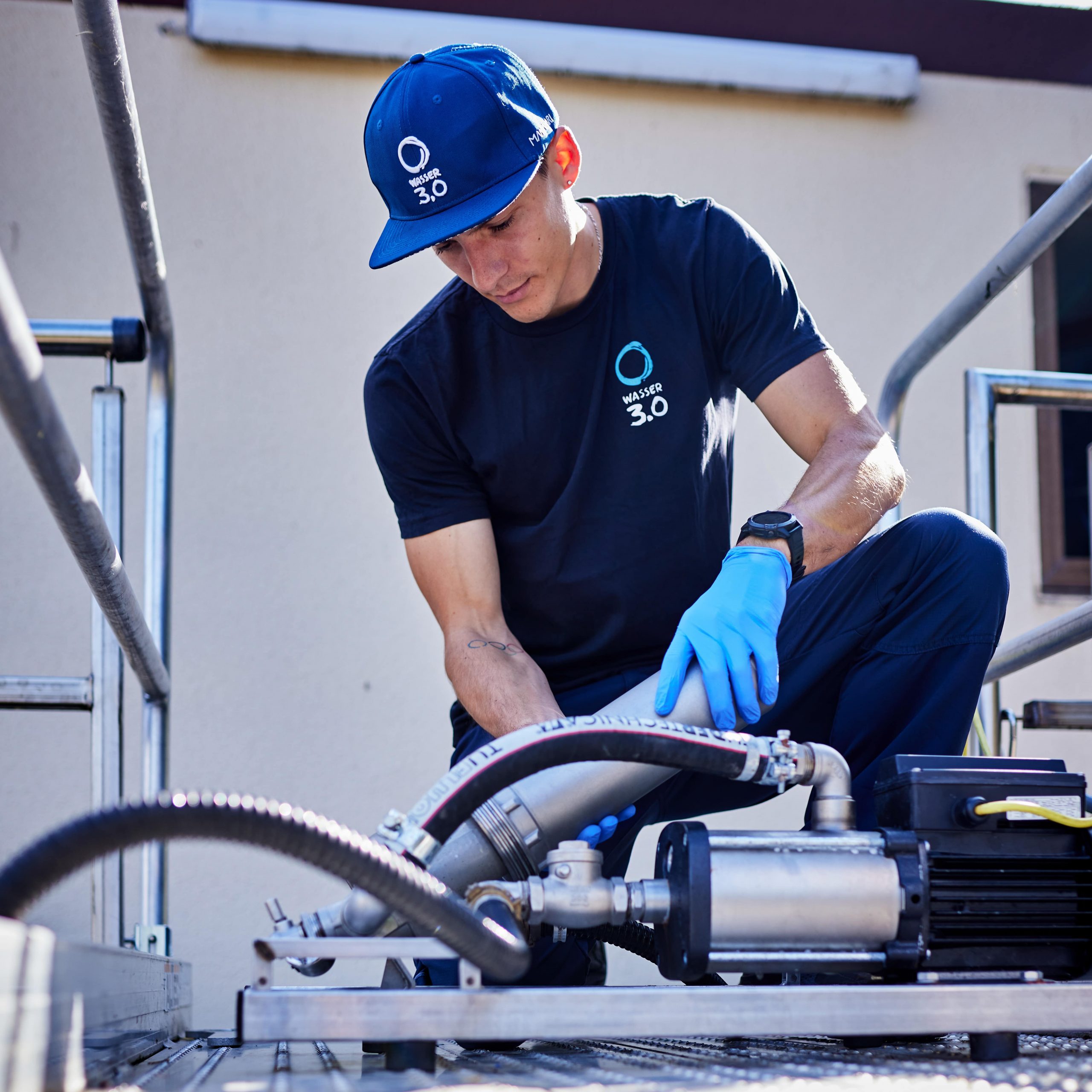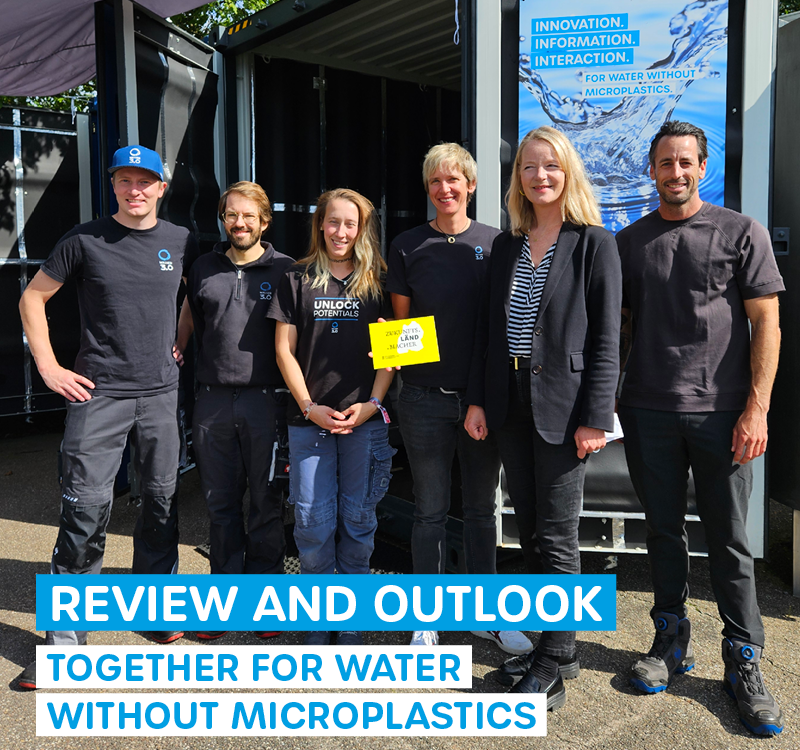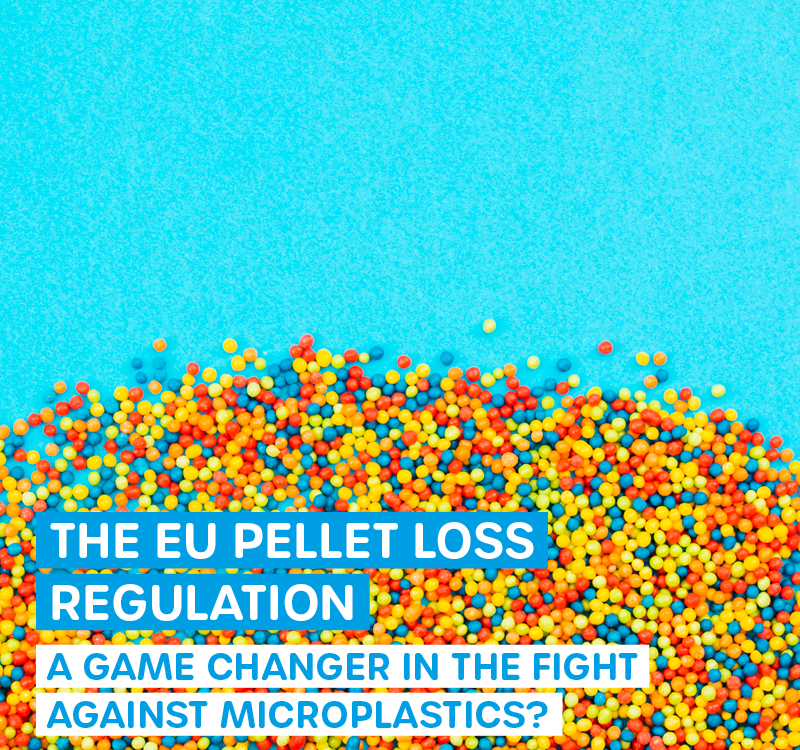
Spread Love, Not Microplastics
23. August 2025
Istria300 with Trikoterie
28. August 2025Standardized Sampling in Microplastic Analytics: Why Nets Fail and Water Column Sampling is Crucial
Microplastic analytics face a fundamental problem: Without standardized sampling, data is not comparable and scientific findings have limited validity. The widespread practice of net-based surface sampling leads to systematic biases and significantly underestimates the true extent of microplastic pollution.
The Failure of Traditional Net Methods: Scientific Evidence
Traditional microplastic sampling with nets (mostly 330 µm mesh size) shows severe methodological weaknesses. Studies demonstrate that nets with 100 µm mesh size capture microplastic concentrations many times higherthan those with 330 µm mesh size. This means: The standard method systematically underestimates contamination. But microplastics can also be significantly smaller than 100 µm, a problem we have addressed with the Wasser 3.0 PSU, which samples particles down to 10 µm in size.
Mesh-Size Bias: Research's Blind Spot
A comprehensive comparative study of various sampling methods clearly proves this problem: Manta nets capture only 14.2% of fibers, while pump samples detect 70-95% of the total fibers. Overall concentrations differ dramatically: While manta nets capture 2.31 particles/m³, pump samples show values two orders of magnitude higher at 357-553 particles/m³. The reason: Nets allow smaller but more prevalant particles to pass through – precisely the particles that are most biologically relevant.
Surface Bias: The Ignored 90% of the Water Column
An even more serious problem is the exclusive focus on the water surface. Scientific investigations of the entire water column show:
- Polymer distribution follows density: Low-density polymers (polypropylene) concentrate at the surface, while higher-density polymers (PET) dominate in deeper layers and sediments
- Surface samples significantly overestimate mean water column concentrations in estuarine and harbor areas
- Up to 66% of microplastic particles in sediments consist of denser polymers that are completely overlooked in surface sampling
The already cited comparative study confirms this: Surface samples (1 m depth) show 2-6 particles/m³, while samples taken at a greater depth (13-23 m) exhibit 1-3 particles/m³. Critical: Polymer composition varies greatly - PET dominates in deeper layers (due to its density of 1.38 g/cm³), while PE predominates at the surface (density 0.91-0.96 g/cm³).
Standardization with the Mobile Particle Sampling Unit (PSU)
We have recognized these methodological problems and developed a mobile Particle Sampling Unit (PSU) that enables standardized, representative samples for the first time:
Technical Specifications of the PSU:
- Sample volume: 100 L to 1 m³ (vs. few liters for bottle samples)
- Filter size: 10 µm filter cartridge (vs. 330 µm for standard nets)
- Application range: Water column, surface water, wastewater treatment plant effluents
- Mobility: Fully portable unit with integrated pump and process technology
Scientifically Validated Superiority
The validation of the PSU shows clear advantages over conventional methods:
- Representativeness: Large sample volumes significantly reduce sampling errors
- Contamination control: Closed system minimizes external contamination
- Time efficiency: Reduction of sampling time from 2-3 hours to a few minutes
- Reproducibility: Standardized protocols ensure comparable results

Oleg taking samples with the PSU © Wasser 3.0
Long-term Monitoring: EU Projects UPSTREAM and REMEDIES as Pioneers
UPSTREAM: Next-Generation River Monitoring
The EU project UPSTREAM (Circular and Bio-Based Solutions for the Ultimate Prevention of Plastics in Rivers) revolutionizes water monitoring with 14 innovative solutions along seven rivers in five countries.
Core objectives of UPSTREAM:
- Standardized monitoring techniques for microplastics down to 25 µm size
- Reduction of plastic pollution by 50% and microplastics by 30%
- Innovative floating platforms with 83% removal efficiency
Within UPSTREAM, we systematically investigate the Queich river in Landau using the PSU. These regular samplings enable the determination of actual dilution factors for ecological assessments for the first time.
REMEDIES: Mediterranean Microplastic Monitoring
The EU project REMEDIES (21 pan-European + 1 African organization) focuses on Mediterranean hotspots with three pillars:
- Monitoring of macro- and microplastics in eight Mediterranean areas
- Collection and valorization of >422 tons of plastic waste
- Prevention of deposition of >61 tons plastic equivalent
We deploy the PSU at the Mykonos wastewater treatment plant for four-years for long-term monitoring to create standardized data foundations for the Mediterranean region.
Critical Insights from Long-term Data: EU Directives Fall Short
Our two-year monitoring study with 320 samples reveals fundamental weaknesses in current EU requirements:
Scientific Evidence:
- Strong temporal variations: 6-62 microplastics/L in wastewater treatment plant effluents
- Individual samples are not representative: Necessity of multiple samplings
- EU requirement insufficient: Two samples/year do not capture temporal variations
Scientific Recommendation:
- Minimum frequency: 2-8 samples/month with duplicate determination
- Cross-validation: Comparison of different methods mandatory
- Seasonal coverage: Year-round data collection
Revolutionary Detection Technology: Fluorescence Microscopy
With our selective fluorescence dye: "abcr eco Wasser 3.0 detect mix MP-1" solves the identification problem:
Technical Advantages:
- Selective staining: Only synthetic polymers fluoresce
- Fast analysis: 15 minutes instead of 15 hours (vs. µFT-IR)
- 99.9% specificity: Eliminates false positives from natural particles
- 56% cost savings: Compared to traditional methods
Quality Assurance: Contamination Control
Systematic studies on contamination control show:
Laboratory Environment Optimization:
- Standard laboratory: Baseline contamination
- Optimized laboratory (HEPA filter, lab coats): 42% reduction
- Microplastic laboratory (airlock, protective suits): 97% reduction
Citizen Science: Democratization of Data Collection – The Global Map of Microplastics
Our Citizen Science approach revolutionizes data collection: More than 5,000+ students have participated in our WASoMI education project to date. We have already been able to store over 7,000 data points in the Global Map of Microplastics. We have detected microplastics in all samples measured by us since 2023 and have been able to identify urban areas, transport routes, and wastewater treatment plants as hotspots.
Future of Microplastic Analytics: Integration and Standardization
The integration of various approaches shows the path for future-proof microplastic analytics:
- Standardized sampling (PSU) for representative data
- Fluorescence detection for fast, specific analysis
- Long-term monitoring for temporal trends
- Citizen Science for spatial coverage
- EU-wide harmonization through projects like UPSTREAM/REMEDIES
Conclusion: The Paradigmatic Shift is Overdue
The scientific evidence is clear: Traditional net-based surface sampling leads to systematic underestimation of microplastic pollution. The water column must be fully captured to understand the true extent of contamination.
Our standardized approaches with the mobile Particle Sampling Unit set new standards for:
- Representativeness through large sample volumes
- Standardization through uniform protocols
- Efficiency through fast fluorescence detection
- Comparability through harmonized methods
The EU projects UPSTREAM and REMEDIES already demonstrate today how coordinated, standardized monitoring works at the European level. Only through this methodological revolution can we move from incomparable individual studies to robust scientific findings that enable effective environmental protection measures.
The future of microplastic analytics is standardized, water column-comprehensive, and scientifically sound – or it remains a costly blind flight.






